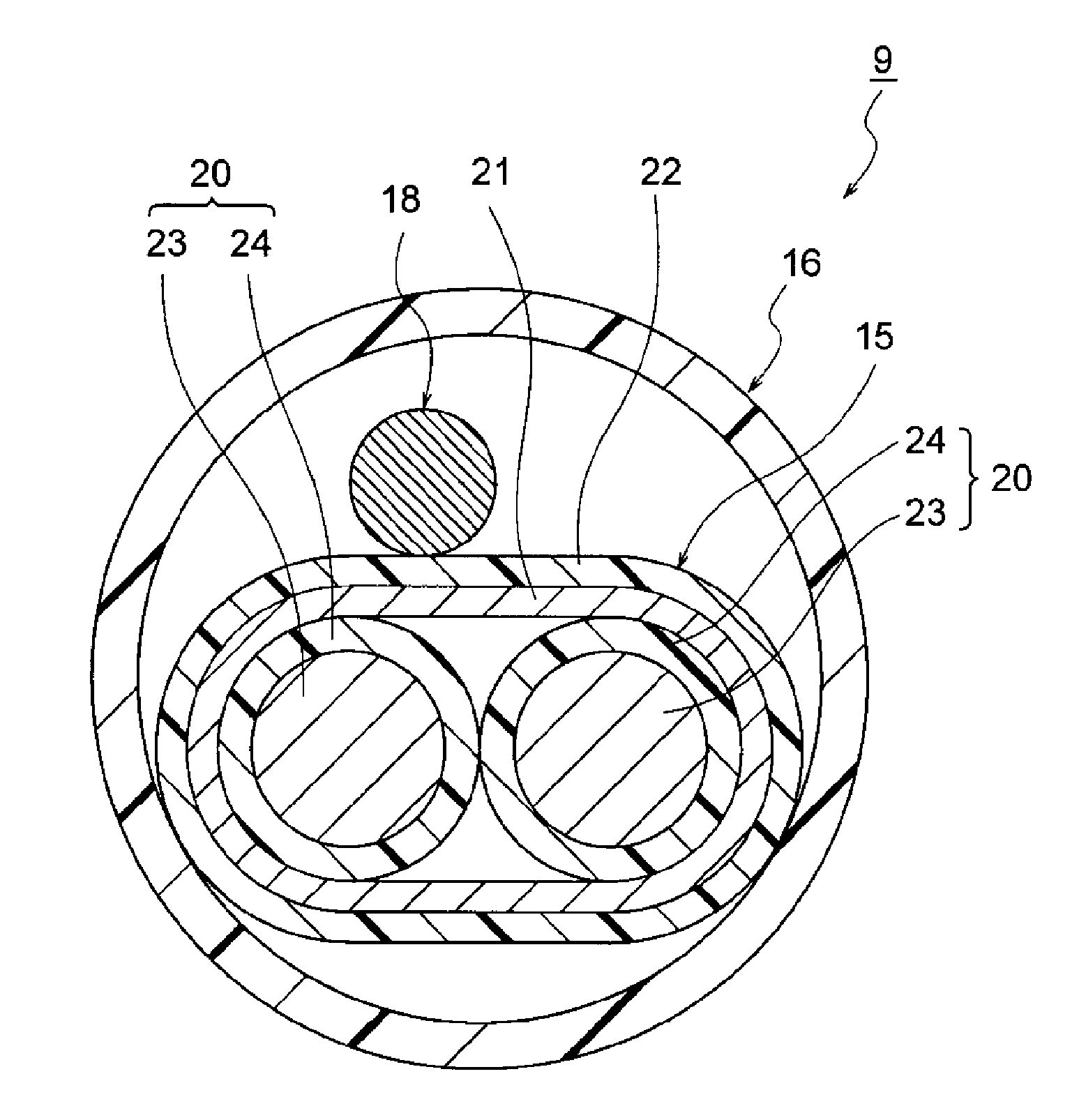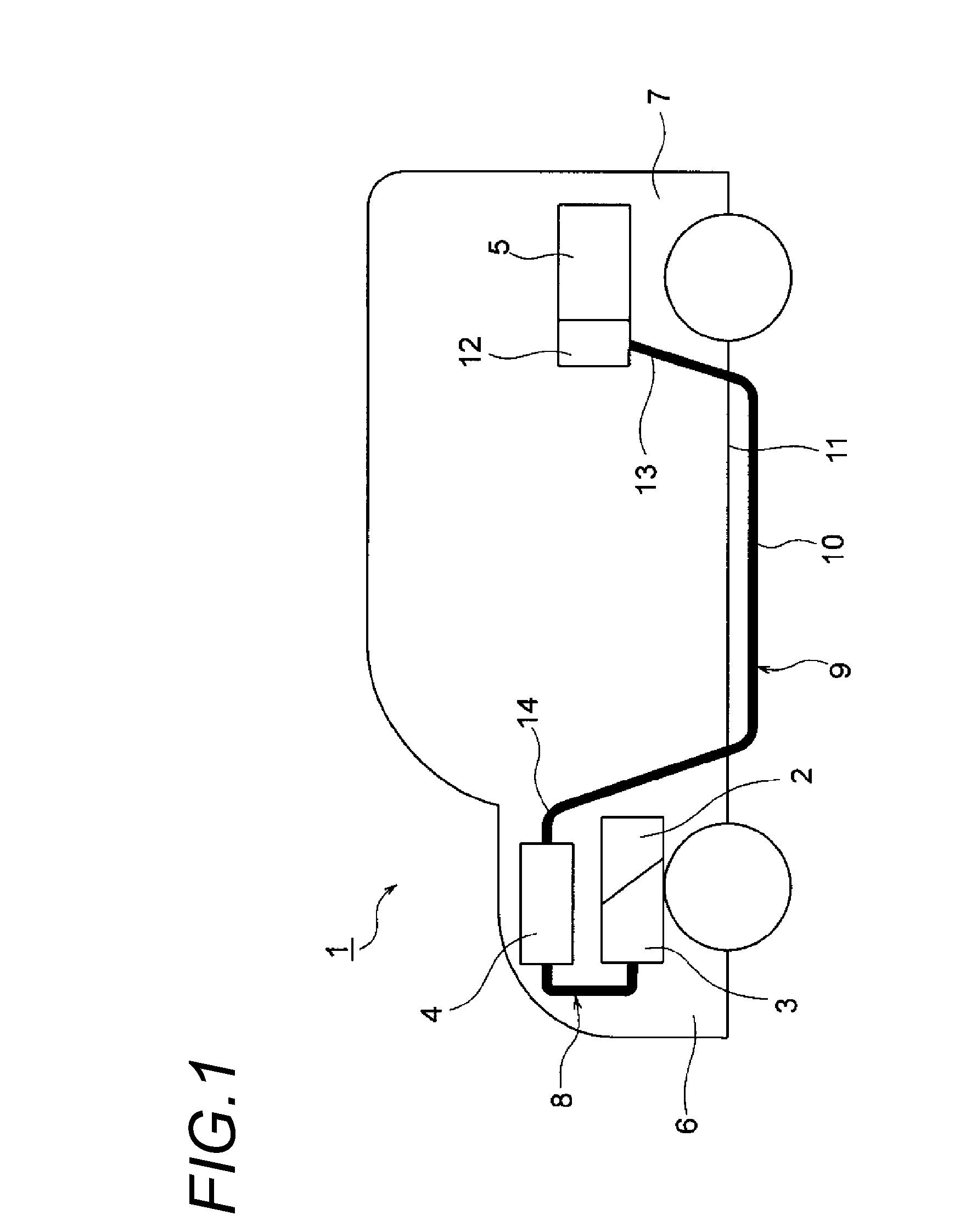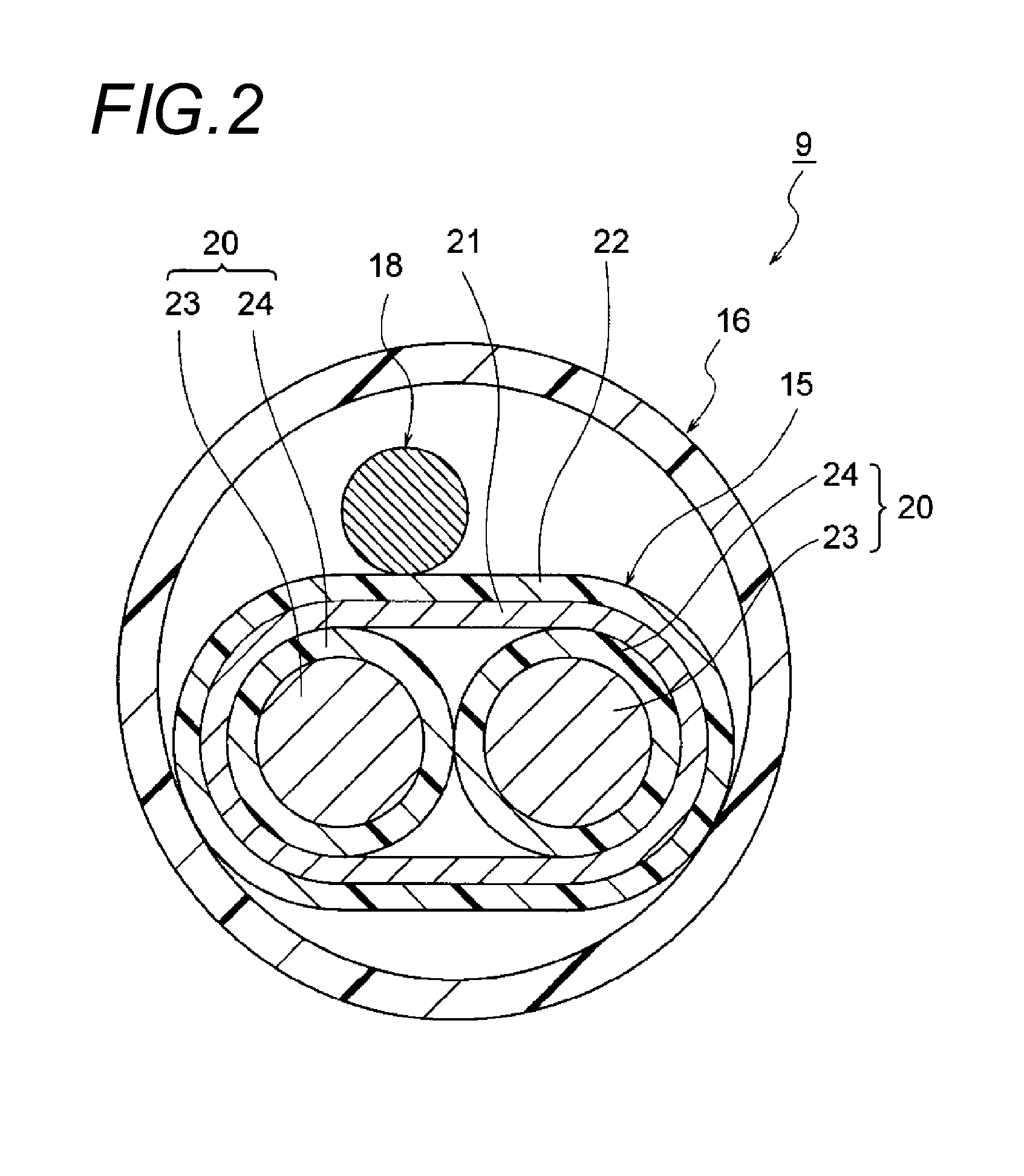Wire harness
a wire harness and wire technology, applied in the direction of insulated conductors, cables, conductors, etc., can solve the problem that the temperature of high-tension electric wires is unlikely to decreas
- Summary
- Abstract
- Description
- Claims
- Application Information
AI Technical Summary
Benefits of technology
Problems solved by technology
Method used
Image
Examples
embodiment 1
[0034]Hereinafter, a wire harness according to Embodiment 1 will be described with reference to FIGS. 1 to 4D. FIG. 1 is a schematic diagram illustrating the routing of the wire harness. FIG. 2 is a diagram illustrating the configuration of the wire harness, FIG. 3 is a diagram illustrating the configuration of an exterior member, and FIGS. 4A to 4D are diagrams illustrating examples of a heat reflecting portion and an identification portion.
[0035]In the following example, the wire harness according to Embodiment 1 is routed in a hybrid vehicle (may be an electric vehicle or a general vehicle).
[0036]In FIG. 1, reference sign 1 indicates a hybrid vehicle. The hybrid vehicle 1 is a vehicle that is driven by the combination of two power sources such as an engine 2 and a motor unit 3. A battery 5 (in other words, battery pack) supplies electrical power to the motor unit 3 via an inverter unit 4. In this example, the engine 2, the motor unit 3, and the inverter unit 4 are mounted in an e...
embodiment 2
[0084]The configuration of a wire harness according to Embodiment 2 will be described with reference to FIG. 5. FIG. 5 is a diagram illustrating the configuration of the wire harness according to Embodiment 2. The same reference numerals and signs will be assigned to the basically same configuration members as in Embodiment 1, and detailed description will be omitted.
[0085]In FIG. 5, the wire harness 9 includes the high-tension conductive path 15; the exterior member 16 that accommodates and protects the high-tension conductive path 15; and the shield connector 17 (refer to FIG. 3) that is provided at the terminal of the high-tension conductive path 15. The exterior member 16 may be formed to have not only a circular cross section as in Embodiment 1, but also an elliptical cross section (may be an oblong circular cross section) so that the shape of the exterior member 16 conforms to an exterior shape of the high-tension conductive path 15. The plurality of heat reflecting portions 2...
embodiment 3
[0087]Hereinafter, a wire harness according to Embodiment 3 will be described with reference to FIG. 6. FIG. 6 is a diagram illustrating the configuration of the wire harness according to Embodiment 3. The same reference numerals and signs will be assigned to basically the same configuration members as in Embodiments 1 and 2, and detailed description will be omitted.
[0088]In FIG. 6, the wire harness 9 includes the high-tension coaxial composite conductive path 32 which is a high-tension conductive path; the exterior member 16 that accommodates and protects the high-tension coaxial composite conductive path 32; and a shield connector (not illustrated) that is provided at the terminal of the high-tension coaxial composite conductive path 32. The plurality of heat reflecting portions 27 are provided in the exterior member 16. The plurality of identification portions 38 (refer to FIG. 3) are provided in the exterior member 16.
[0089]The high-tension coaxial composite conductive path 32 h...
PUM
| Property | Measurement | Unit |
|---|---|---|
| color | aaaaa | aaaaa |
| tubular shape | aaaaa | aaaaa |
| conductive | aaaaa | aaaaa |
Abstract
Description
Claims
Application Information
 Login to View More
Login to View More - R&D
- Intellectual Property
- Life Sciences
- Materials
- Tech Scout
- Unparalleled Data Quality
- Higher Quality Content
- 60% Fewer Hallucinations
Browse by: Latest US Patents, China's latest patents, Technical Efficacy Thesaurus, Application Domain, Technology Topic, Popular Technical Reports.
© 2025 PatSnap. All rights reserved.Legal|Privacy policy|Modern Slavery Act Transparency Statement|Sitemap|About US| Contact US: help@patsnap.com



